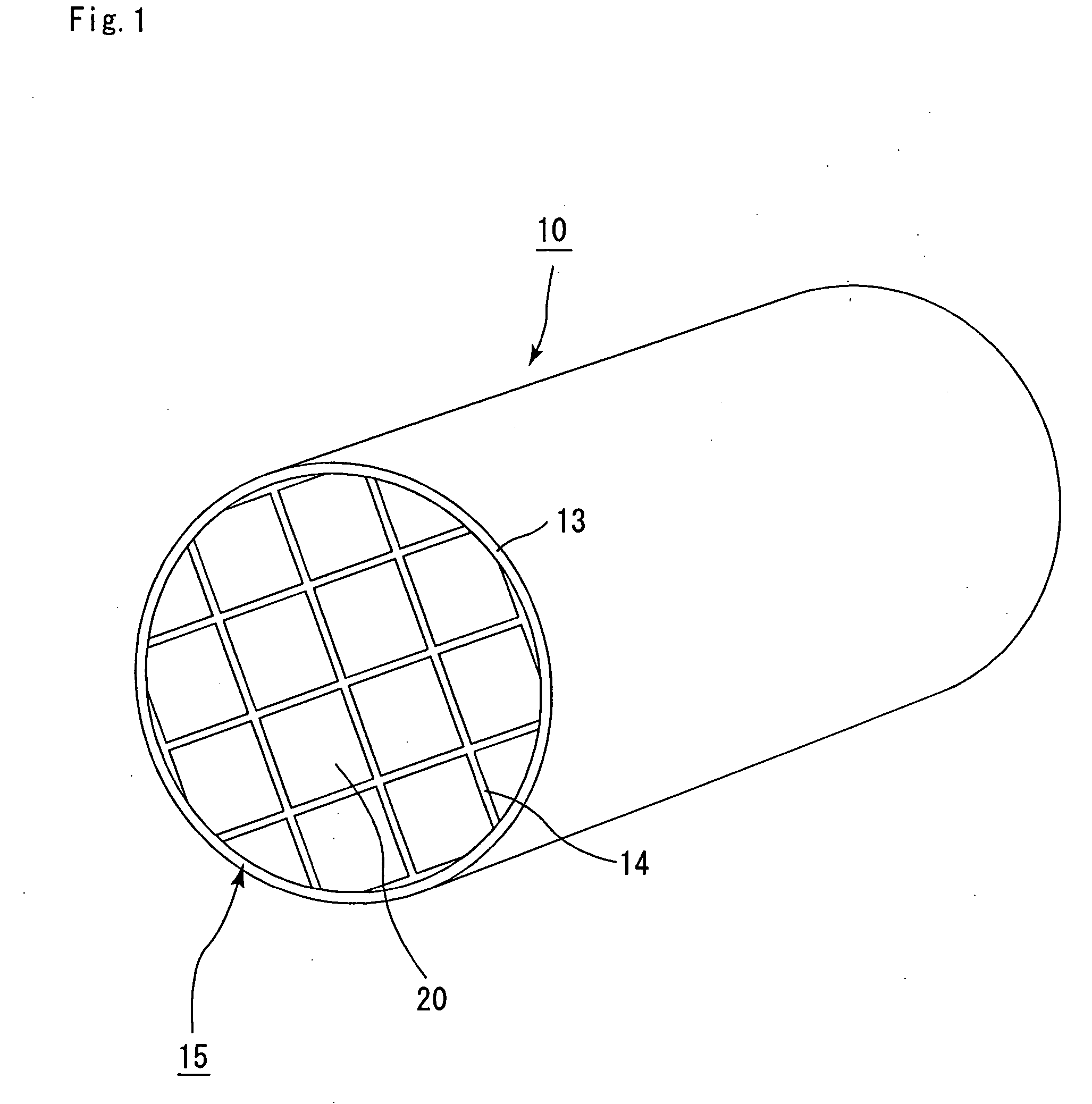Honeycomb structural body
a technology of honeycomb and structural body, applied in the field of honeycomb structural body, can solve the problems of increasing pressure loss, affecting the performance of the engine, and affecting the quality of the engine, so as to reduce the load on the engine, and effectively utilize the capacity of large-capacity through holes
- Summary
- Abstract
- Description
- Claims
- Application Information
AI Technical Summary
Benefits of technology
Problems solved by technology
Method used
Image
Examples
example 1
[0137] (1) Powder of α-type silicon carbide having an average particle size of 11 μm (60% by weight) and powder of β-type silicon carbide having an average particle size of 0.5 μm (40% by weight) were wet-mixed, and to 100 parts by weight of the resulting mixture were added and kneaded 5 parts by weight of an organic binder (methyl cellulose) and 10 parts by weight of water to obtain a mixed composition. Next, after a slight amount of a plasticizer and a lubricant have been added and kneaded therein, the resulting mixture was extrusion-molded by using a metal mold having a surface roughness Ra of 10 μm at the portions corresponding to the through holes so that a raw molded product, which had almost the same cross-sectional shape as each of the cross-sectional shapes shown in FIGS. 4(a) to 4(d), was manufactured with an aperture ration of 2.54.
[0138] Next, the above-mentioned raw molded product was dried by using a micro-wave drier to form a ceramics dried body, and after predetermi...
examples 2 to 6 and 11 to 13
)
[0145] The same processes as Example 1 were carried out except that in the process (1), the cross-sectional shapes of the large-capacity through holes and the small-capacity through holes were formed into shapes as shown in Table 1, with the wall thickness being set to a value shown in Table 1, so that a porous ceramic member was manufactured, and a honeycomb structural body was then produced. The wall thickness, the surface roughness Ry of through-hole wall faces, the density of the through holes and the porosity of the resulting honeycomb structural body are shown in Table 1.
example 7
[0146] The same processes as Example 1 were carried out except that in the process (1), the cross-sectional shapes of the large-capacity through holes and the small-capacity through holes were formed into shapes as shown in Table 1, with the sintering conditions changed to 2000° C. and 3 hours, so that a porous ceramic member was manufactured, and a honeycomb structural body was then produced.
[0147] The wall thickness, the surface roughness Ry of through-hole wall faces, the density of the through holes and the porosity of the resulting honeycomb structural body are shown in Table 1.
PUM
| Property | Measurement | Unit |
|---|---|---|
| surface roughness Ry | aaaaa | aaaaa |
| surface roughness | aaaaa | aaaaa |
| height | aaaaa | aaaaa |
Abstract
Description
Claims
Application Information
 Login to View More
Login to View More - R&D
- Intellectual Property
- Life Sciences
- Materials
- Tech Scout
- Unparalleled Data Quality
- Higher Quality Content
- 60% Fewer Hallucinations
Browse by: Latest US Patents, China's latest patents, Technical Efficacy Thesaurus, Application Domain, Technology Topic, Popular Technical Reports.
© 2025 PatSnap. All rights reserved.Legal|Privacy policy|Modern Slavery Act Transparency Statement|Sitemap|About US| Contact US: help@patsnap.com



